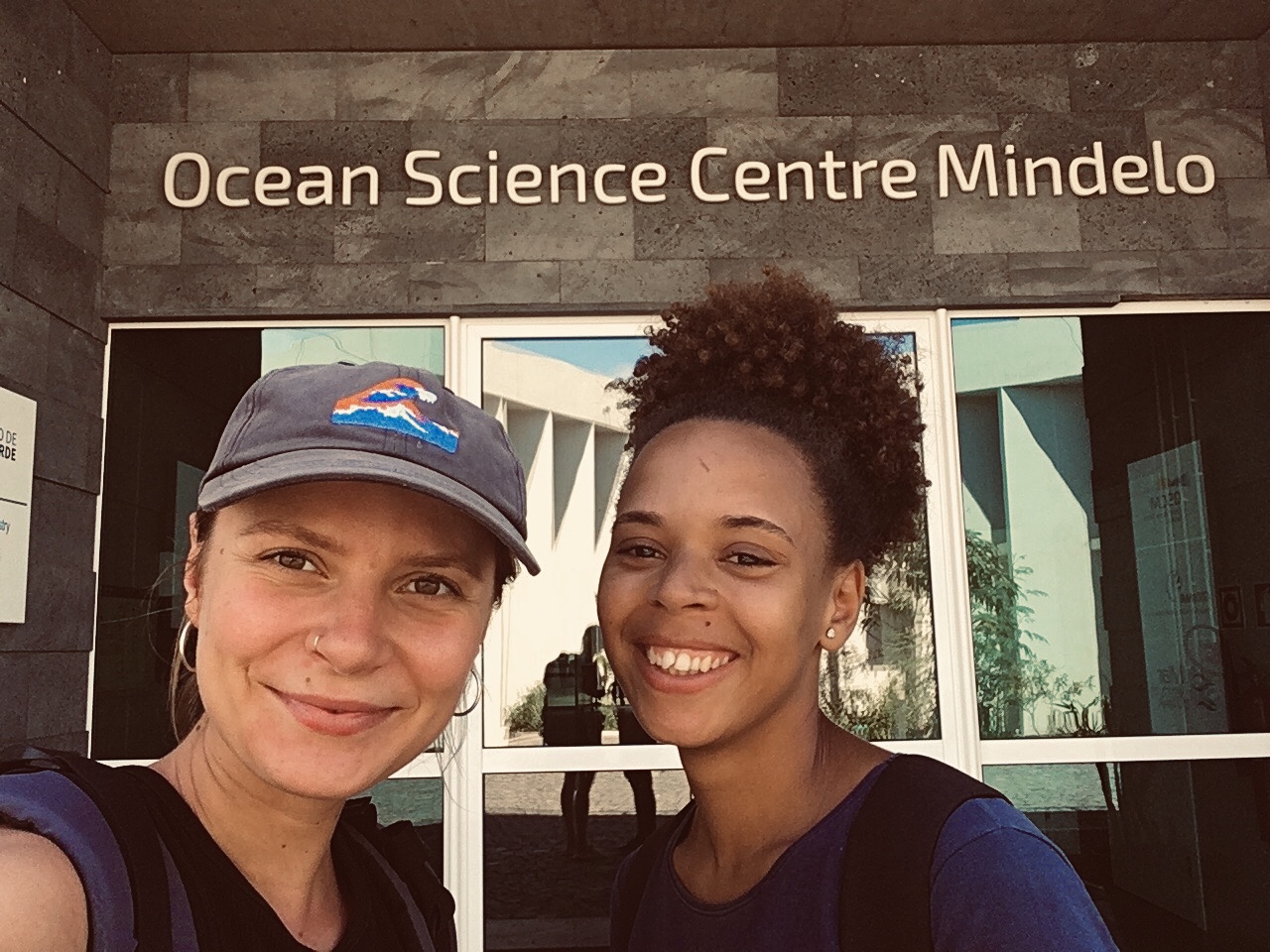We are Amelie (DE) and Isia (CV) and together we make Team Cabo Verde 2023. Those foreign words above are greetings in Creole, the Cabo Verde mother tongue, meaning “Hello, how are you?”.
Continuing with last year’s research topic, we will investigate how artificial light at night (ALAN) influences the settlement behaviour of sessile invertebrates and macroalgae on hard-bottom substrates. Contrary to the GAME teams in 2021 and 2022, we will run our experiments outdoors and not in a lab. Although, it is a really exciting approach as we are going to deal directly with marine life forms in their natural habitat, it can come with some new challenges that we will need to work on. The experiment will be conducted on São Vicente Island, precisely at the Mindelo Marina.
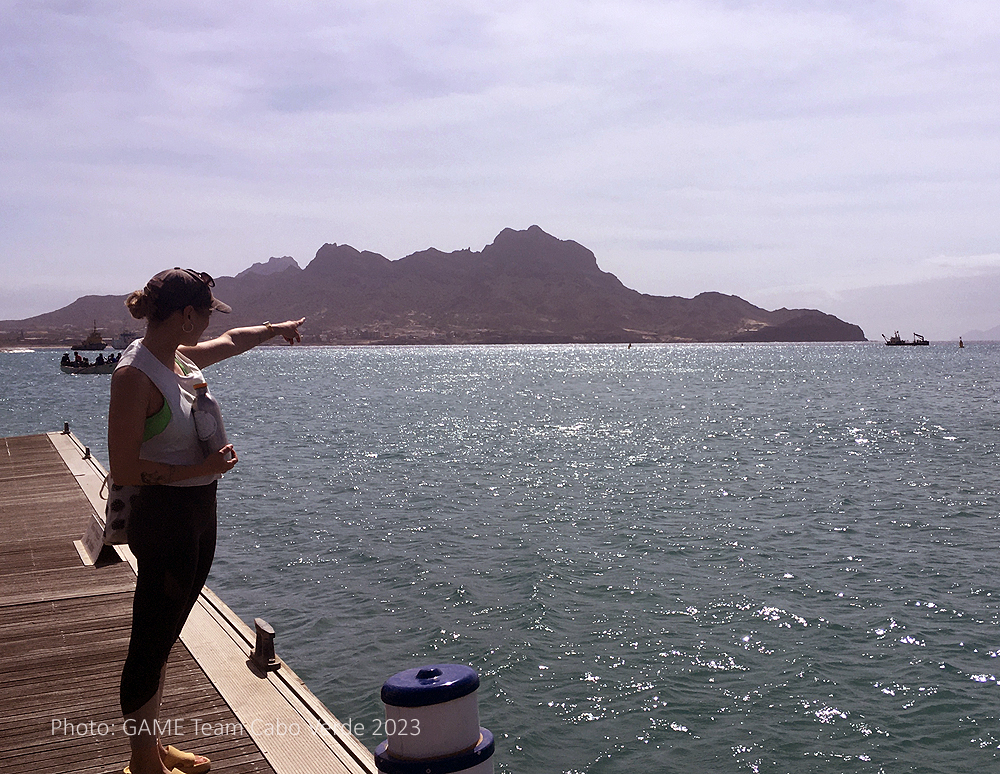
Right after Amelie from Kiel arrived here, we went to the Ocean Science Center Mindelo (OSCM), which is a joint facility of the GEOMAR Helmholtz Centre for Ocean Research Kiel, Germany, and the IMar – Instituto do Mar – in Mindelo, Cabo Verde. It will support us with any help that we may need during the project. Furthermore, it will provide us space to assemble the experimental set-up. We also went to the Technical Atlantic University (UTA), where Isia will finish her Bachelor in Biological Sciences, and got acquainted with some docents who were very welcoming and supportive of the project. At OSCM, we had the chance to meet Patrick Fonseca and Paulo Vasconcelos, former Gamies that were also very kind to us and to give us any advice that might help us during this journey.
To investigate whether ALAN influences the settlement behaviour of sessile organisms, we are going to deploy sets of PVC panels in the marina and have them exposed to white or yellow ALAN from sunset to sunrise. A further set of panels will not be exposed to ALAN and will serve as a control that allows to identify the potential influence that ALAN may have on the colonization of the panel surfaces. As each one of us two will analyse the effect of one type of ALAN (white versus yellow light), we will have two sets of control panels. If a comparison between these two sets of control panels will not reveal any statistically significant difference between them, we can exclude that a potential difference between the types of ALAN goes back to the experimenters’ analyses.
The experiment will go on for three months and every month the panels will be retrieved from the water so that we can inspect them and measure their wet weight, total coverage, number of species present (identified to the lowest possible taxonomic level) and the abundances of the species. In the end, we will scrape all the organisms off so that we can measure their dry weight. The data will be analysed with statistical tests to identify if there is an effect of ALAN on the colonization process and, if yes, this effect is different between light colours.
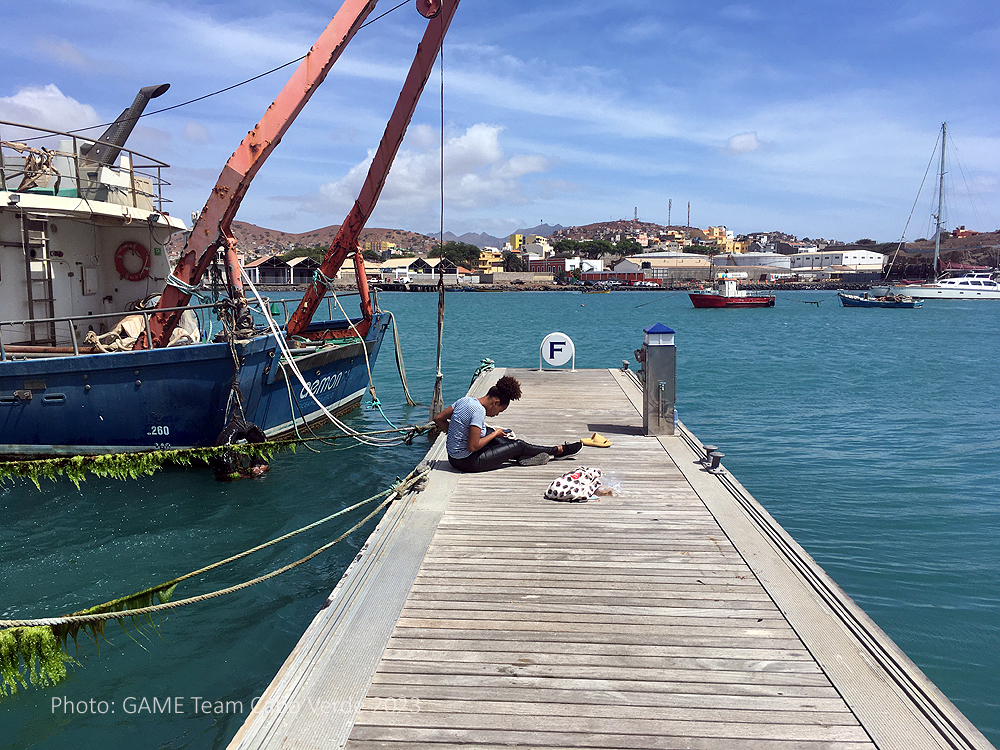
For assembling the experimental setup, during the last weeks, we have been on a quest around town visiting hardstores and any place where we thought that we can find the materials that we need to build and deploy the setup. We had a major setback, because we weren’t able to find PVC panels anywhere in the city. Just when we were losing hope, teacher Evandro Pires Lopes from UTA told us that he still has PVC panels from another experiment, which he had been working on. More important is that he said that he is totally fine with us making use of them. So even though they are bigger than the ones we had in mind, we just need to adapt our setup to them. Which was a great relief.
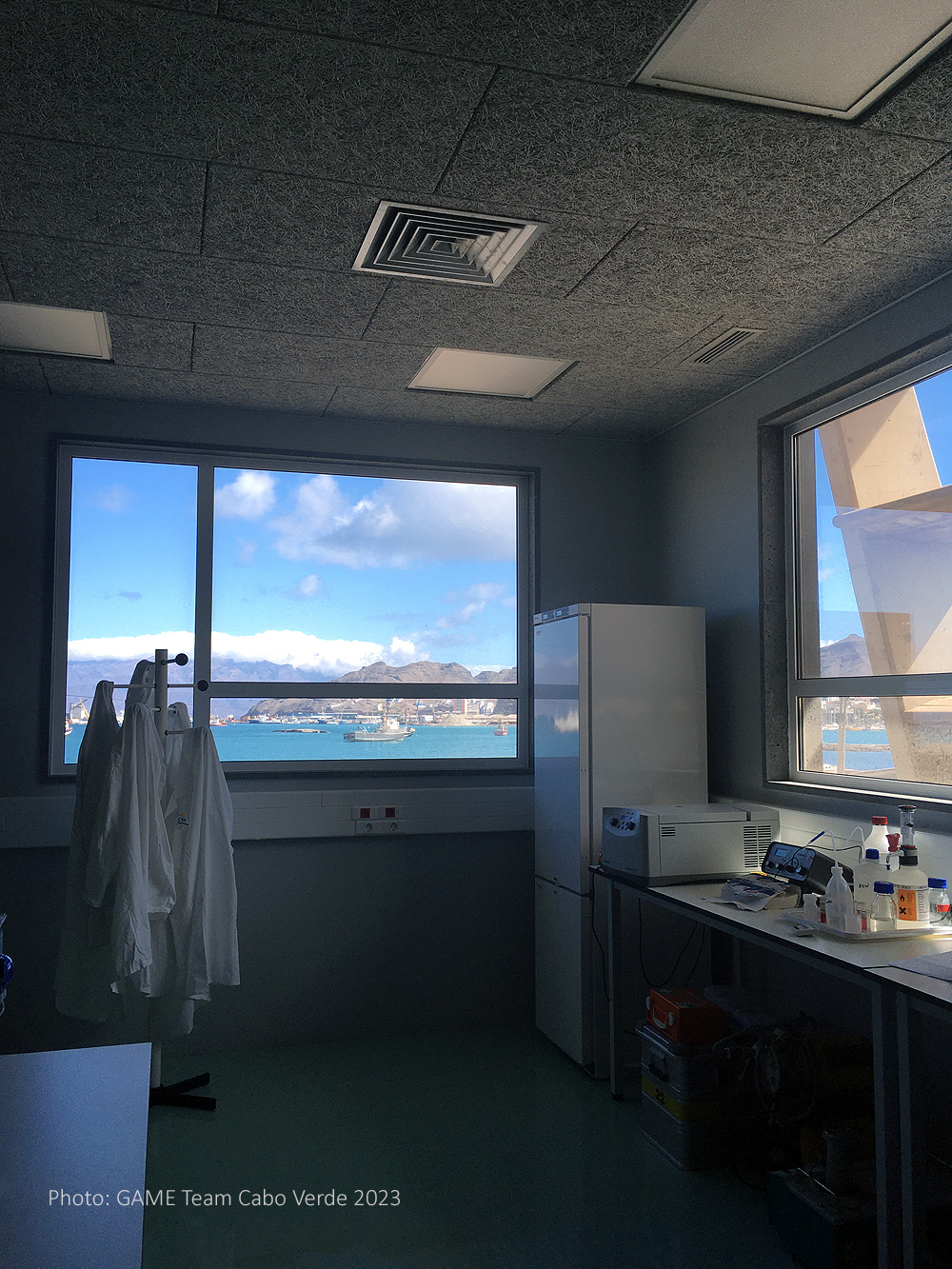
For the next week, we plan to buy all the materials we are going to use, such as PVC pipes, cable ties, snap hooks, buoys, ropes, nets and lots of chains. Once we have those, we are ready to start with building the setup so that we can deploy the panels as soon as possible. However, we already deployed two PVC panels in the marina so that we can get an impression how fast colonisation and succession take place at the site. Furthermore, by this we can start with familiarising ourselves with the marine life in the area in order to facilitate the identification of the organisms that will be on the panels.
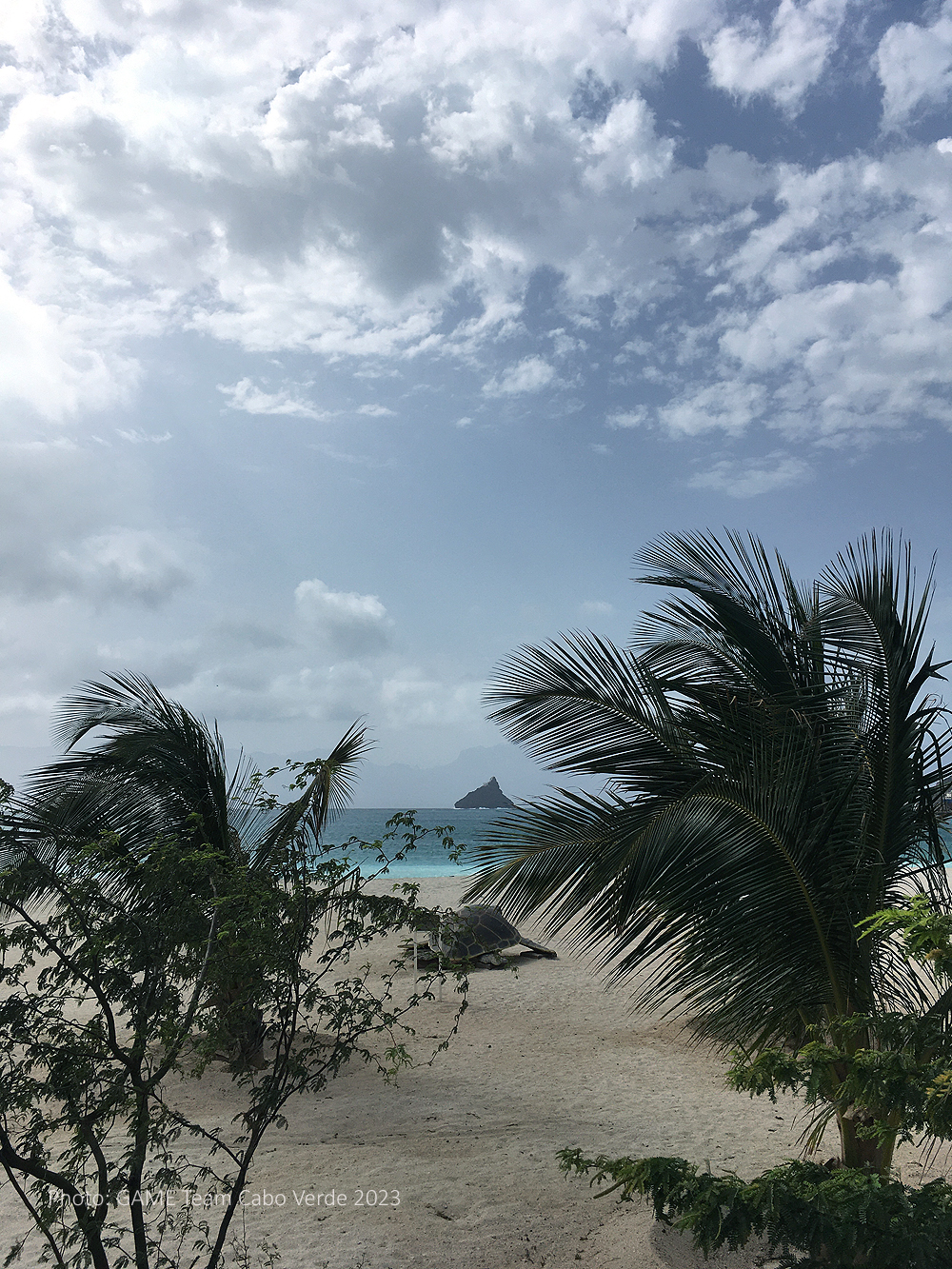
While working on this project, we should always be prepared for all kinds of challenges that may come our way. This is important even though we are brainstorming a lot and always try to foresee the difficulties before they come up and find practical solutions on beforehand. It is not always possible to get things right on the first try. The first big challenge for our team was that, due to a delay in visa issues and other complications here in CV, Isia could not fly to Kiel in March to join all the other teams for the preparatory course. As there were constant updates on what was happening there, we successfully overcame this challenge.
Luckily, so far, our supervisors here have been very helpful and we can always contact them when we have questions regarding materials or the setup itself. Also, we have weekly meetings with the other GAME participants and Mark Lenz in which we discuss and exchange ideas. This has already turned out to be very helpful. Furthermore, we can always request a team meeting with Mark so that we can discuss more detailed questions and concerns that may come up.
Making use of our spare time, we have been wandering around town, going for swims on the nearest beaches and getting to know the marine life here. A couple of weeks ago, we went to Baía das Gatas, a really beautiful calm beach where we had the opportunity to visit the village and then do some snorkelling in the sea. There, we saw a lot of the wonderful marine life at the site such as coral reefs, macroalgae, anemones, polychaete worms and jellyfishes.
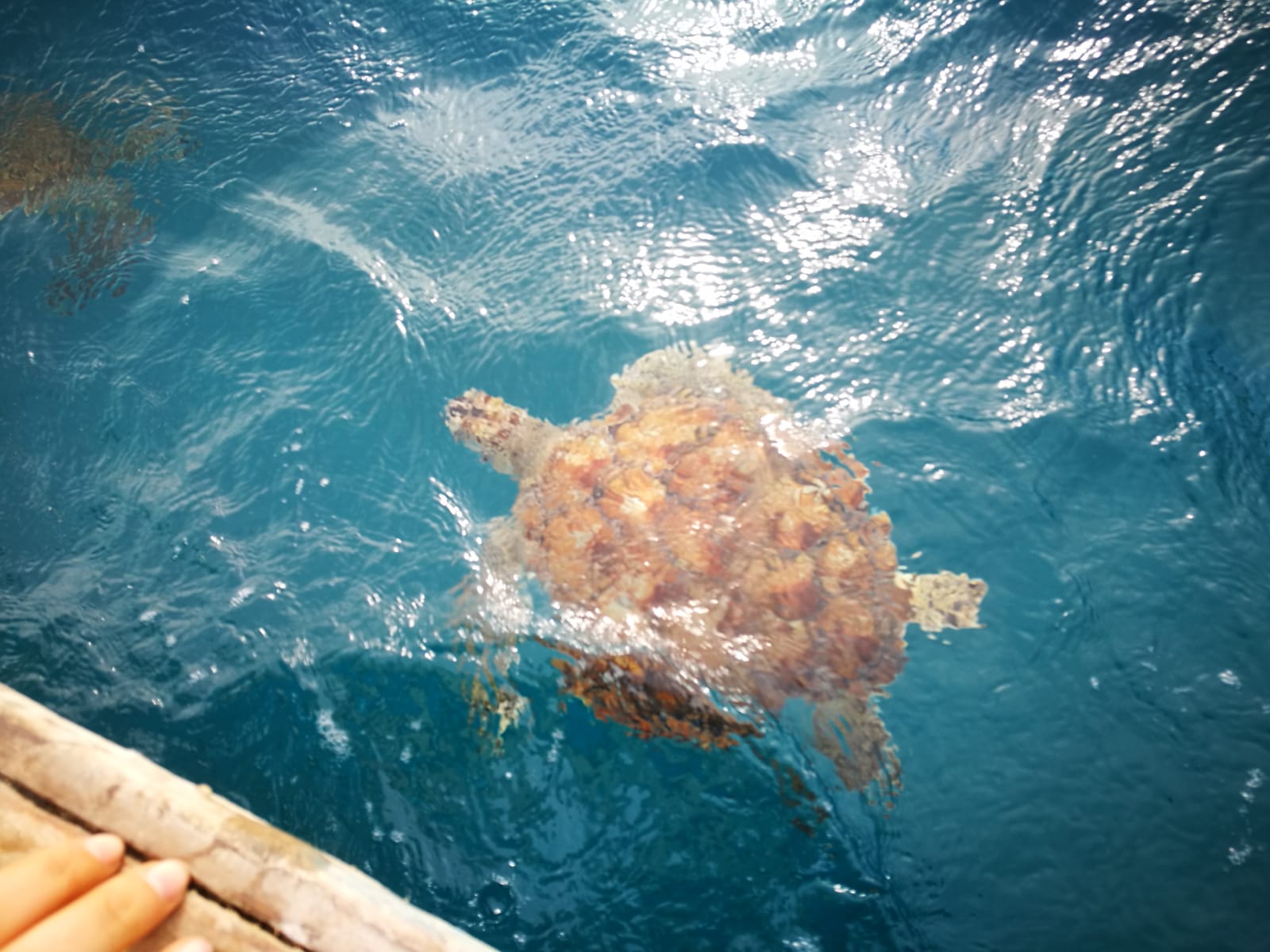
Our plan is to have the panels in the water by the end of May. Until then we will continue building our setup and will hopefully adjust all possible details that could be crucial for the success of our experiment.
Warm greetings from Cabo Verde!!!!
